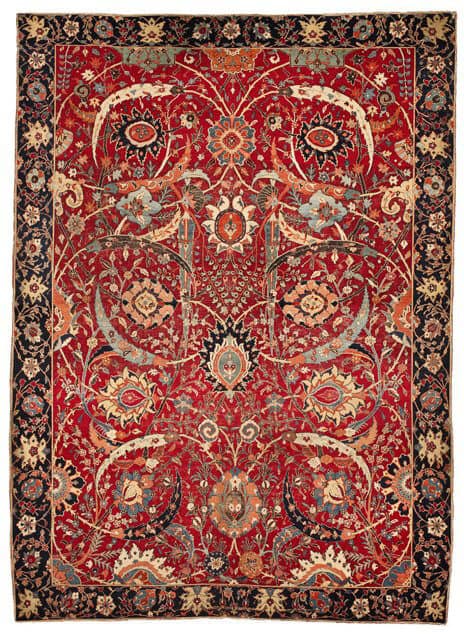The first known mention of Persian carpets comes from around 400 BC when Greek author Xenophon writes that the carpets were so precious that they were an acceptable gift for diplomacy. Luxury, prestige, a sign of wealth.
And so they have remained 2,000 years later. Authentic Rugs from Persia (modern Iran) are still expensive, despite many modern competitors creating similar items. After all, the rug secrets of knotting, colors, and materials have long since been revealed.
The hallmarks of a true Persian rug: Natural dyes; hand-knotted with the Persian Knot; made of wool and/or silk fibers; ending with structural fringe, not sewn or glued, according to Rug Knots.
Today, most major museums have a Persian carpet dating from at least the 16th century. These extraordinary carpets can be worth millions, according to the New York Times. In fact, in 2013, Sotheby’s sold a 17th century, 9-by-6.5 foot carpet made in Southeast Iran for $33 million, the highest known price.
Trade sanctions have made it illegal for US dealers to sell Persian carpets made after 1987, when the sanctions began. Today if someone advertises such rug, it has been illegally brought into the U.S. or the seller is telling a fib.
But not to worry. If you can’t afford millions, there are plenty of options available.
Essentially any authentic Persian-style carpet made outside Iran is called an Oriental Rug. So long as it matches the hallmarks of the Persian style, it can be considered genuine. But the price has many fewer zeroes. An authentic Oriental area rug can run about $4,000 to $6,000. Small rugs are much more affordable, in the $500 range, and are often used as wall hangings.
Some Oriental rugs are manufactured in the Persian style using Bamboo silk, considered a little more eco-friendly since it doesn’t kill silk worms.
